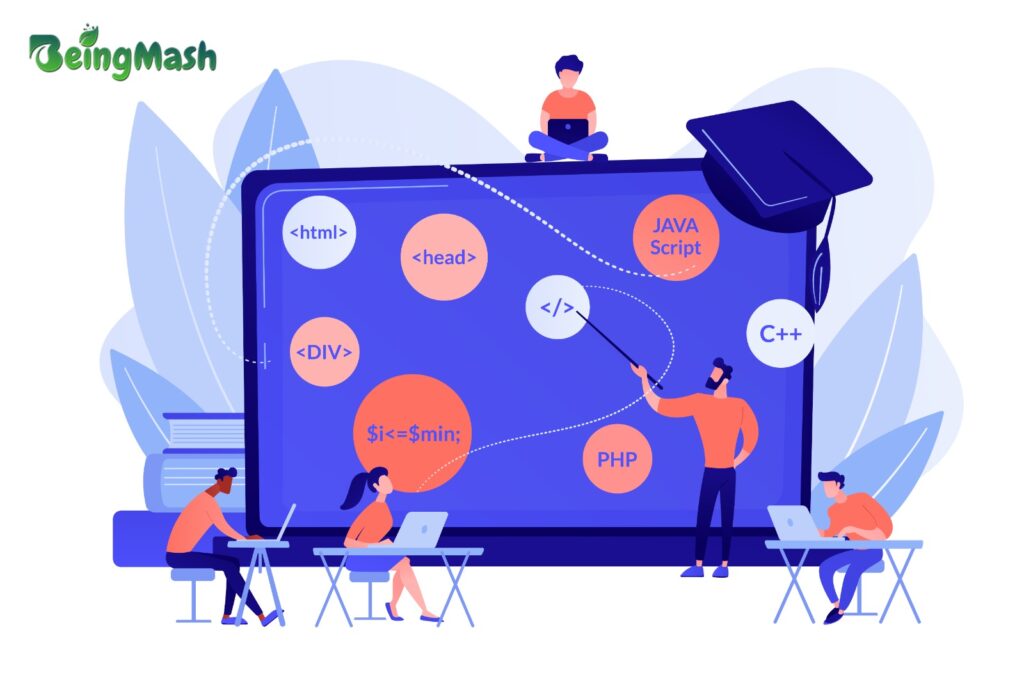At its core, cloud computing refers to the delivery of computing services—such as storage, processing power, and software—over the internet, rather than on local servers or personal devices. In essence, it allows users to access and utilize computing resources on-demand, without the need for extensive infrastructure investments.

Key Components of Cloud Computing
- Infrastructure as a Service (IaaS): This involves the provision of virtualized computing resources over the internet.
- Platform as a Service (PaaS): PaaS provides a platform allowing customers to develop, run, and manage applications without dealing with the underlying infrastructure.
- Software as a Service (SaaS): SaaS delivers software applications over the internet on a subscription basis.
Benefits of Cloud Computing
- Scalability: Cloud computing allows businesses to scale their computing resources up or down based on demand, enabling flexibility and cost-efficiency.
- Cost Savings: By eliminating the need for upfront hardware investments and reducing maintenance costs, cloud computing can lead to significant cost savings for businesses.
- Accessibility: Cloud services can be accessed from anywhere with an internet connection, enabling remote work and collaboration among distributed teams.
- Reliability and Redundancy: Cloud providers often offer redundant infrastructure and data backups, ensuring high availability and data resilience.
Types of Cloud Deployments
- Public Cloud: Services are provided over the internet by third-party providers and are available to anyone who wants to use or purchase them.
- Private Cloud: Cloud infrastructure is operated solely for a single organization, providing greater control and security.
- It can be hosted on-premises or by a third-party provider.
- Hybrid Cloud: Combines elements of public and private clouds, allowing data and applications to be shared between them.
Cloud computing has transformed the way businesses and individuals consume computing resources, offering unparalleled scalability, cost-efficiency, and flexibility.
By understanding its key components, benefits, and deployment models, organizations can harness the power of the cloud to drive innovation and achieve their business objectives in today’s fast-paced digital landscape.
Emerging Trends in Cloud Computing
- Edge Computing: With the proliferation of Internet of Things (IoT) devices and the need for real-time data processing, edge computing has gained prominence. Edge computing involves processing data closer to the source, reducing latency and bandwidth usage.
- Server less Computing: Server less computing, also known as Function as a Service (FAAS), abstracts the underlying infrastructure, allowing developers to focus solely on writing and deploying code in the form of functions.
- Multi-Cloud Adoption: As organizations seek to avoid vendor lock-in and optimize performance, many are adopting a multi-cloud strategy, leveraging services from multiple cloud providers. This approach allows organizations to choose the best services for their specific needs and distribute workloads across different cloud environments.
- Artificial Intelligence and Machine Learning Services: Cloud providers are increasingly offering AI and machine learning services, democratizing access to advanced analytics capabilities.
Future Outlook
The cloud computing landscape continues to evolve rapidly, driven by technological advancements and shifting business requirements. Emerging technologies such as edge computing, server less computing, and AI are reshaping how organizations leverage the cloud to innovate and stay competitive.
As cloud providers continue to expand their offerings and improve performance, we can expect cloud computing to remain a cornerstone of digital transformation across industries.
By staying abreast of emerging trends and best practices, organizations can harness the full potential of the cloud to accelerate innovation, drive efficiency, and unlock new opportunities in the digital economy.

Google Drive has long been a staple for cloud storage and collaboration, enabling users to store, share, and collaborate on files from anywherez.
With the introduction of Google Drive for Desktop, Google is taking its cloud storage service to the next level, offering a unified experience across desktop and mobile devices.
Let’s explore the features and benefits of Google Drive for Desktop and how it can enhance productivity for users.
Unified Experience Across Devices
Google Drive for Desktop replaces both Google Drive for Mac/PC and Google Backup and Sync,
providing a single, unified application for accessing and syncing files across desktop and mobile devices.
Whether you’re using a Windows PC, Mac, or Chromebook, Google Drive for
Desktop ensures a consistent experience, streamlining file management and collaboration.
Seamless File Syncing and Backup
One of the key features of Google Drive for Desktop is its seamless file syncing and backup capabilities. Users can easily sync files and folders between their desktop and Google Drive, ensuring that their most important files are always up to date and accessible from any device.
Enhanced Collaboration and Sharing
Google Drive for Desktop makes collaboration and sharing easier than ever. Users can share files and folders with colleagues, clients, or friends directly from their desktop, eliminating the need to switch between different applications or browser tabs.
With real-time collaboration features, multiple users can edit documents simultaneously, fostering teamwork and productivity.
Integrated Google Workspace Features
For users subscribed to Google Workspace (formerly G Suite), Google Drive for Desktop integrates seamlessly with other Google Workspace apps, such as Google Docs, Sheets, and Slides.
This integration enables users to create, edit, and collaborate on documents directly from their desktop, without having to open a web browser.
Enhanced Security and Privacy Controls
Google Drive for Desktop prioritizes security and privacy, offering enhanced controls and encryption mechanisms to protect users’ data. Administrators can enforce security policies, such as multi-factor authentication and data loss prevention, to safeguard sensitive information.
With granular permission settings, users can control who has access to their files and folders, ensuring compliance with regulatory requirements and organizational policies.
Conclusion

Google Drive for Desktop represents a significant step forward in cloud storage and collaboration, offering a unified experience across desktop and mobile devices.
With seamless file syncing, enhanced collaboration features, and integrated Google Workspace capabilities, Google Drive for Desktop empowers users to work more efficiently and securely, whether they’re in the office, at home, or on the go.
As Google continues to innovate and improve its cloud storage service,users can expect even more features and enhancements to further enhance their productivity and collaboration.



